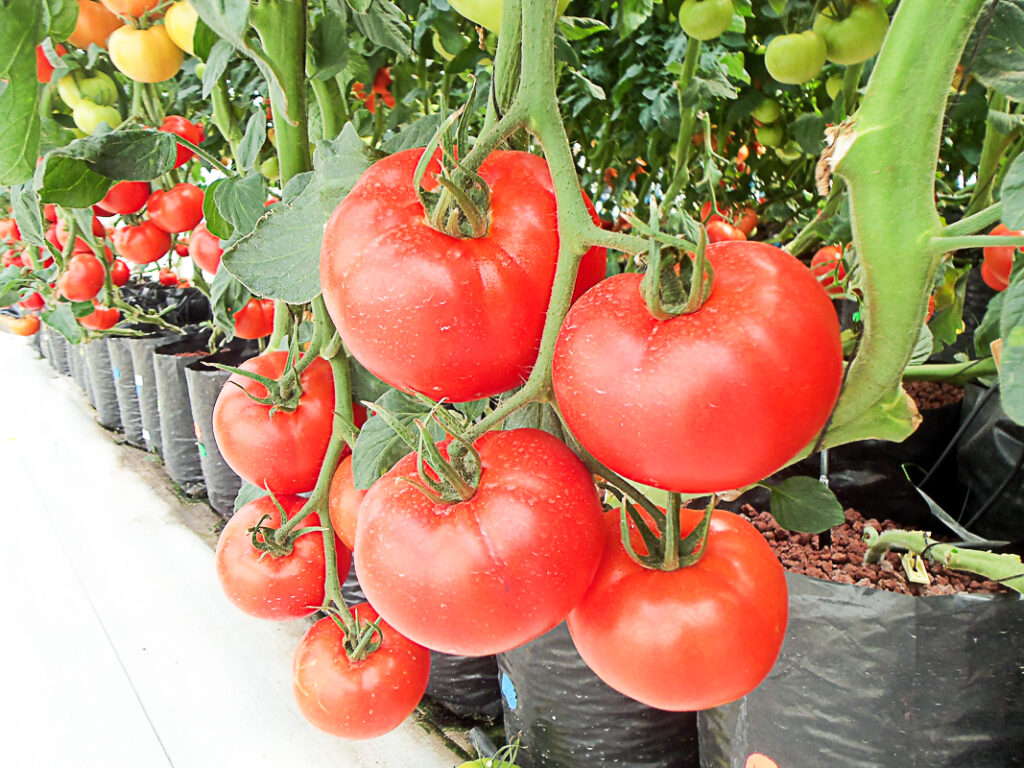If you are looking for an innovative garden but you lack soil and space, a DIY hydroponics system is what you need. Most beginner gardeners are looking for ways to grow crops and maximize their yields without having to go the traditional way of using soil. In this post, we share our seven worthwhile tips on DIY hydroponics.
*This post contains compensated links. Find more info in my DISCLAIMER. As an Amazon Associate, I earn from qualifying purchases.
Want to start a hydroponic garden at home easily? Check out our recommendations for Best Hydroponics Starter Kits for Beginners.
What Is A DIY Hydroponics System?
In the world of hydroponics, you can grow your crops using ready-made growing kits or build your own. Both systems grow crops without using any soil. Plants get their required nutrition from a nutrient-rich solution that is fed to their roots. For new home growers, using a growing kit is the easiest and fastest way to get started. While new growers can certainly build their own DIY hydroponic system, they are often reserved for growers with a bit more experience.
Why Should You Set Up DIY Hydroponics?
Growing crops in hydroponic systems result in better growth and increased yields. The two are a result of increased levels of oxygen found in the nutrient solutions and other factors found in the controlled environment. An increase in oxygen levels stimulates the growth of roots and uptake of nutrients.
Plants in a homemade hydroponic setup can be grown nearly anywhere. Provided factors like water, light, and nutrients are taken into account, you can have DIY indoor hydroponics, in greenhouses, or outdoors.
Because the nutrient-charged solution in these systems is delivered to the roots, plants can be grown closer together. Normally closely planted crops would be in competition for nutrients, but not in this case. Additionally, growing hydroponically allows for a longer growing season. Factors like light, temperature, and nutrient supplies can be controlled all year round.
There is less water consumption, despite the systems depending entirely on the water for plant growth. They utilize 80 to 90% less water compared to soil gardening. On reaching the roots, less water is lost to evaporation as the nutrient solution is recirculated severally before becoming unusable. It is at this point that the water can be discarded. This makes the systems highly water efficient.

Being mostly indoors, pests in these systems are not prevalent because entrances are controlled. The fewer the pests, the fewer the pesticides.
Harvesting plants is easier because they are usually grown on benches or tables which puts them at waist level. This is advantageous to gardeners with movement and physical ailments because they will not strain to reach the ground.
However, on the downside, these homemade hydroponic systems are expensive and difficult to set up, they are prone to power outages and require frequent maintenance and monitoring.
DIY Hydroponics Systems – What You Should Know
Before starting a DIY hydroponic garden, several factors need to be considered. There are some of the most important to keep in mind.
Determining Location
The most suitable locations for growing include basements, greenhouses, any other enclosed structures. Outdoor patios or decks also make for ideal growing locations. The floors of these structures should be even so that there are equal nutrients and water coverage to plants.
When you use the system outdoors, make sure you protect it from strong winds and the elements. You should also check the water levels regularly because there could be water loss due to evaporation.
Temperature
Keeping an eye on the temperature is very important when growing anything. Too hot or too cold and you can severely damage your crops. If your system is outdoors, you can shift it indoors during cold weather to prevent it from the harsh weather.
Lighting
Provide supplemental lighting by adding grow lights to your indoor system. When installing outdoors, ensure the plants receive sunlight at least 14 hours a day. However, the plants should not be exposed to direct sunlight.
Cost
The cost of setting up your own hydroponic system can vary. The overall size and complexity of the system will ultimately determine how experience it turns out.
Materials And Tools
Tools needed are a garden hose, buckets, and PH testing kits. These tools can be sourced from online plant stores such as amazon.
Materials needed are plant clips, PVC pipe, nutrient tanks, plastic tubing, planting cups, growing medium, waters, stands, trellises, pumps, plants, twine, and a hydroponic system fertilizer.
Type Of Plants
There’s a wide range of plants that grow well in hydroponic systems. From herbs like basil and dill to vegetables including cucumbers, squash, tomatoes, beans, bell peppers, and eggplants. Some take more work than others but your choices are many.
Fertilizer
When looking for the most suitable fertilizer for your system, you ought to measure the recommended amounts as indicated on the product labels. If the fertilizer is homemade, you must be keen to use the right quantities. Note that hydroponics is pesticide-free. There are DIY nutrients for hydroponics such as compost tea.
Having the above DIY hydroponic plans will enable you to choose the best system that is fit for you. You can choose to grow to have a DIY hydroponic herb garden or a vegetable garden.
Installation
Setting up a homemade hydroponic system is a simple process. The nutrient tank is placed below the table having 6 inch PVC growing tubes. The pump is put inside the tank to convey nutrients to plants through a manifold of plastic tubes and PVC pipes.
All the growing tubes have drainpipes joined to lead back to the tank. The manifold is then put on top of the pipes to channel pressurized water to the tubes.
For the plants to get nutrients, water moves inside the PVC pipes and manifold to the small tubes that are inside the larger growing tubes.
Nutrients get out through the tiny holes of the nutrient tubes and get to the plant roots. Furthermore, air bubbles come out from the jet of water to supply sufficient oxygen to the plants.
Procedure For Installing DIY Hydroponics
Add water and nutrients to the gallon tank as recommended by the nutrients’ labels and then turn on the pump to run for half an hour to mix the nutrients.
Plant the healthiest crops or seedlings to the holes. The roots should be free from any soil particles and dirt that may block the tiny holes. To remove the dirt on the roots, dip the plants in lukewarm water. Note that too hot or too cold water may put the plants in injury.
Pull the roots to the bottom of the planting cup and then add a growing medium to give plants the required support so that they stay upright.
Tie the plants to the trellis using strings and plant clips. The strings offer support for vertical growth. The strings are then loosely tied to the trellis at the top. The clips and strings are then attached to the base of every plant.
Run the pump and ensure you check the water and nutrient levels frequently because evaporation of water may occur. It is also necessary to make sure the tank does not dry out because the pump may burn up.
The rest of the work is to check plant growth. There is a fast growth because water and nutrients are available in plenty. You should do the monitoring regularly to ensure there are no pest and disease attacks.
FAQs – DIY Hydroponics
One of the fastest and cheapest ways to start with hydroponics is with a hydroponic kit. These kits are ideal for new home growers as they contain everything you need. Growing in mason jars is another cheap and easy way to grow hydroponically.
Growing successfully with hydroponics requires special attention to six important aspects; water, air, space, heat, light, and nutrients. No one aspect is more important than the other so a delicate balance must be maintained.
One of the easiest hydroponic systems to use is the Deep Water Culture or DWC. In a Deep Water Culture system, plant roots are immersed in nutrient-rich water instead of soil. The system only requires a water pump to circulate the water. Thus making it one of the easiest hydroponic systems to use.
